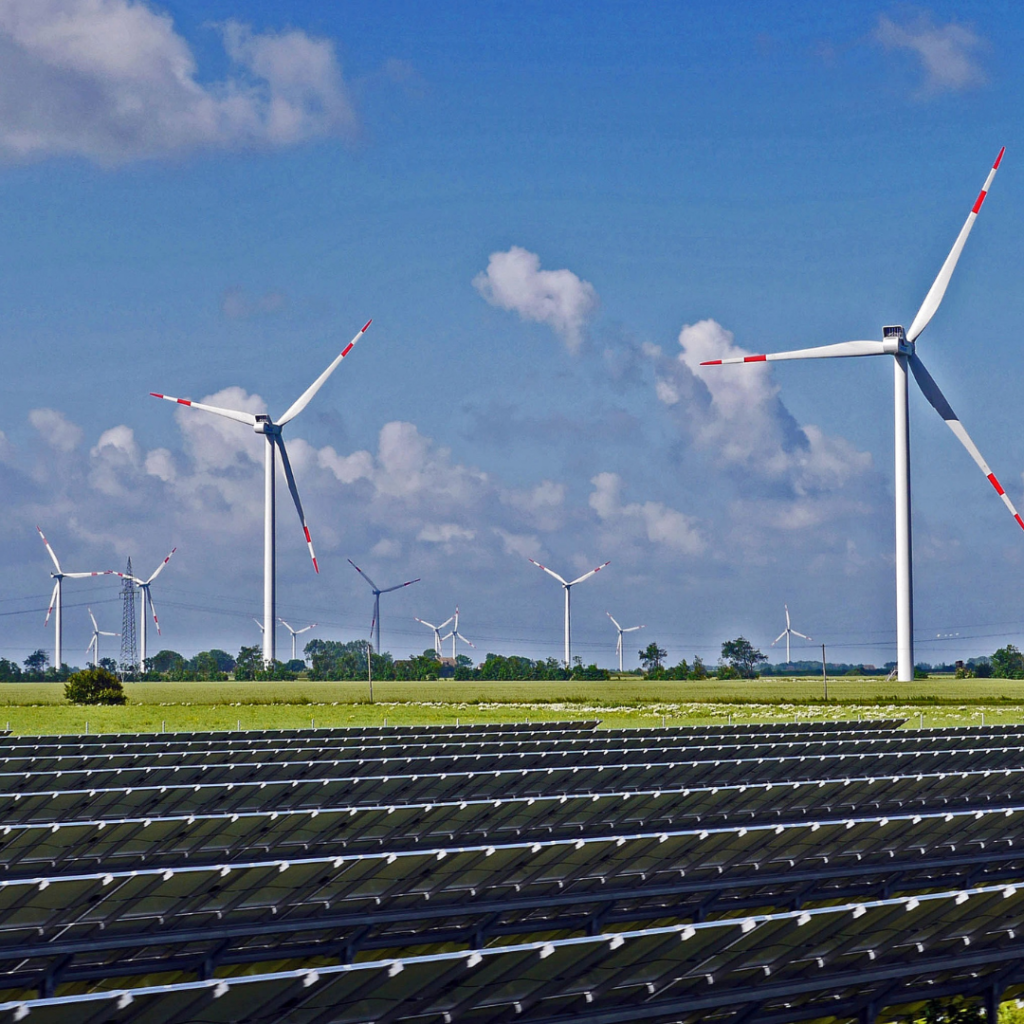The carbon footprint of technology tells us about how tech usage impacts global climate change. Climate change concerns are becoming a critical interest as we experience more extreme weather. Many people wonder if technology is helping or hurting greenhouse gas emissions. To find out more we did some research, and the results might surprise you! Did you know that spam emails actually have a measurable carbon footprint? So do your social media posts! The carbon footprint of technology goes beyond the production of devices and is impacted by our internet use.
The carbon footprint of our gadgets, the internet and the systems supporting them account for about 3.7% of global greenhouse emissions, according to some estimates. It is similar to the amount produced by the airline industry globally… If we were to rather crudely divide the 1.7 billion tonnes (1.6 billion tons) of greenhouse gas emissions estimated to be produced in the manufacture and running of digital technologies between all internet users around the world, it means each of us is responsible for 414kg (912lbs) of carbon dioxide a year.
-from “Why your internet habits are not as clean as you think”
How to Calculate the Carbon Footprint of Technology
One of the biggest challenges in making technology greener is figuring out how to determine the carbon footprint of technology. What should be included, and what should be left out? How do you factor in things like carbon off-sets or companies using renewable energy?
The Information and Communication Technology (ICT) sector includes IT and telecommunications. Communications company Ericsson reports on the carbon footprint of technology in ICT. They note that the sector’s carbon footprint could be reduced by over 80% just by switching to 100% renewable energy sources [1]. Electricity use is one of the biggest contributors to carbon emissions in the ICT sector.
Technology can be used for better or worse when it comes to carbon emissions. Ericsson identifies three main ways that technology impacts climate change. The first is direct carbon emissions from manufacturing, use, and disposal [1]. Second, there are indirect emissions from technology use that can positively or negatively impact emissions. This includes avoiding travel by meeting digitally or reducing the use of paper records. Third, technology impacts climate by changing behaviors and preferences. This can also have a positive or negative impact (digital receipts vs paper; frequency of device replacement; using renewable energy).
What is the Carbon Footprint of Technology?

So how much CO2 does our technology use emit? Carbon emissions are measured in CO2e (carbon dioxide equivalents) per gram, kilogram, ounce, pounds, or tonnes. Let’s look at some of the most common digital activities and their environmental impact.
The IT industry’s greenhouse gas emissions are predicted to reach 14% of global emissions by 2040.
-from “Why your internet habits are not as clean as you think”
The Carbon Footprint of Email
Per year, a typical business person can generate 135kg (298lb) CO2e from their emails [2]. That is equivalent to driving a family car 200 miles. In a single day, one person can create 1.6kg (3.5lb) CO2e just from their own emails
- Spam email: 0.3g CO2e per email [2]
- Regular email: 4g CO2e per email [2]
- An email with photo or large attachment: 50g CO2e per email [2]
The Carbon Footprint of Texting & Messaging Apps
SMS text messages only generate 0.014g of CO2e each [2]. Texting is actually one of the most environmentally friendly methods of communication. However, you’ll want to keep it to plain text. Gifs, emojis, and images have a larger carbon footprint than messages that are plain text. Using WhatsApp or Facebook Messenger messages are estimated to be almost the same CO2e as an email. So that is one more reason to feel annoyed when a contact with your phone number messages you on Facebook instead of just sending you a normal text.
The Carbon Footprint of Social Media
- The carbon footprint of a tweet is estimated to be 0.2g CO2e [2]
- Sharing an Instagram photo has a carbon footprint of 0.15g CO2e [3]
- Scrolling your Instagram feed emits about 1.9g CO2e [3]
- Tik Tok has a larger carbon footprint than other social media, emitting 4.9g CO2e per minute [3]
The Carbon Footprint of Calls and Video Conferencing
A one-minute phone call has a similar carbon footprint to a text message [2]. Video calling has a larger carbon footprint than normal calls. A 5-hour video conference call between international participants could have 4kg to 215kg CO2e. However, video calling produces 7% less CO2e than meeting in person.
The Carbon Footprint of Google, Searching, and Web Browsing
Reading news and getting information online produces less carbon than a paperback book (1kg CO2e) or a weekend newspaper (0.3kg-4.1kg CO2e) [2]. Google estimates that an average user produces less than 8g CO2e per day. This includes 25 searches, 60 minutes watching YouTube, and utilizing Gmail and some other Google services. Ten years ago, they estimated that each internet search had a carbon footprint of 0.2g CO2e.
The Carbon Footprint of Streaming Video
60% of the world’s internet traffic comes from watching videos online [2]. This accounts for about 1% of global emissions and about 300m tonnes of CO2 per year. Video streaming companies can reduce the environmental impact of streaming by using renewable energy. However, Greenpeace shows that big streaming companies are not utilizing renewable energy as much as they could.
- Prime: 17% clean energy index; 24% natural gas; 30% coal; 26% nuclear (C rating)
- Netflix: 17% clean energy index; 24% natural gas; 30% coal; 26% nuclear (D rating)
- Hulu: 20% clean energy index; 30% natural gas; 29% coal; 20% nuclear (F rating)
- HBO: 22% clean energy index; 20% natural gas; 25% coal; 25% nuclear (D rating)
- YouTube: 56% clean energy index; 15% natural gas; 14% coal; 10% nuclear (A rating)
The electricity used when driving an electric car for about 0.6km is equal to the electricity used when streaming a 2-hour video to a laptop (network and data centers included).
-from “A quick guide to your digital carbon footprint”
The Carbon Footprint of Cryptocurrency
Bitcoin is estimated to produce about 22m tonnes of CO2e per year (larger than the country of Jordan) [2]. Mining cryptocurrency consumes a large amount of computing power and electricity. Mining software runs continuously. CNN reports that from 1/1/2016 to 6/30/2018, mining operations for four major cryptocurrencies released up to an estimated 13 million metric tons of carbon dioxide.
How Can You Reduce Your Digital Carbon Footprint?
- Don’t upgrade your devices frequently [1,2]. Using a computer and monitor for six years instead of four conserves 190kg of carbon emissions. Likewise, don’t buy more devices than you actually need.
- Skip “thank you” and “ok” type emails [2]. If the entire adult UK population sent just one less short “thank you” email it could save 16,433 tonnes of carbon per year (equivalent to removing 3,334 diesel cars from the road).
- Use links to documents instead of sending attachments in emails [2].
- Unsubscribe from email lists and spam [2].
- Reduce the number of recipients you send emails to (only send to people who need the information) [2].
- Recycle or reuse your devices [1].
- Support companies that are using renewable resources [1].
- Consider the carbon costs and benefits of using technology vs not using technology.
References
- A quick guide to your digital carbon footprint. (n.d.). Telefonaktiebolaget LM Ericsson. Retrieved August 3, 2021, from https://www.ericsson.com/en/reports-and-papers/industrylab/reports/a-quick-guide-to-your-digital-carbon-footprint
- Griffiths, S. (2020, March 5). Why your internet habits are not as clean as you think. BBC Future. Retrieved August 3, 2021, from https://www.bbc.com/future/article/20200305-why-your-internet-habits-are-not-as-clean-as-you-think
- Statista. (2021, July 2). Environmental impact of Instagram features, in grams of CO2 equivalent in France 2020. https://www.statista.com/statistics/1177040/carbon-emissions-instagram-feature-usage-grams-co2-equivalent-france/



Recent Comments